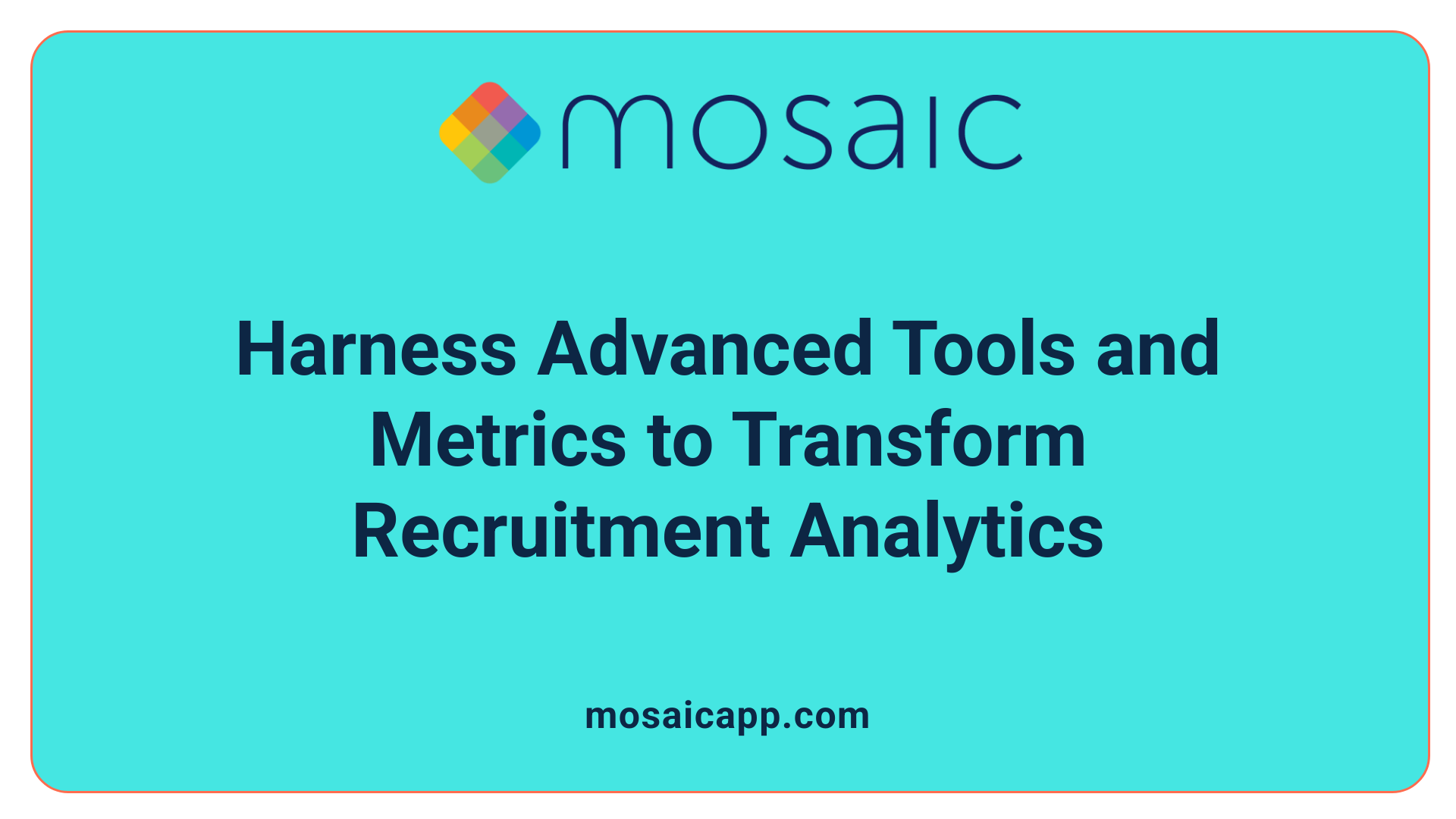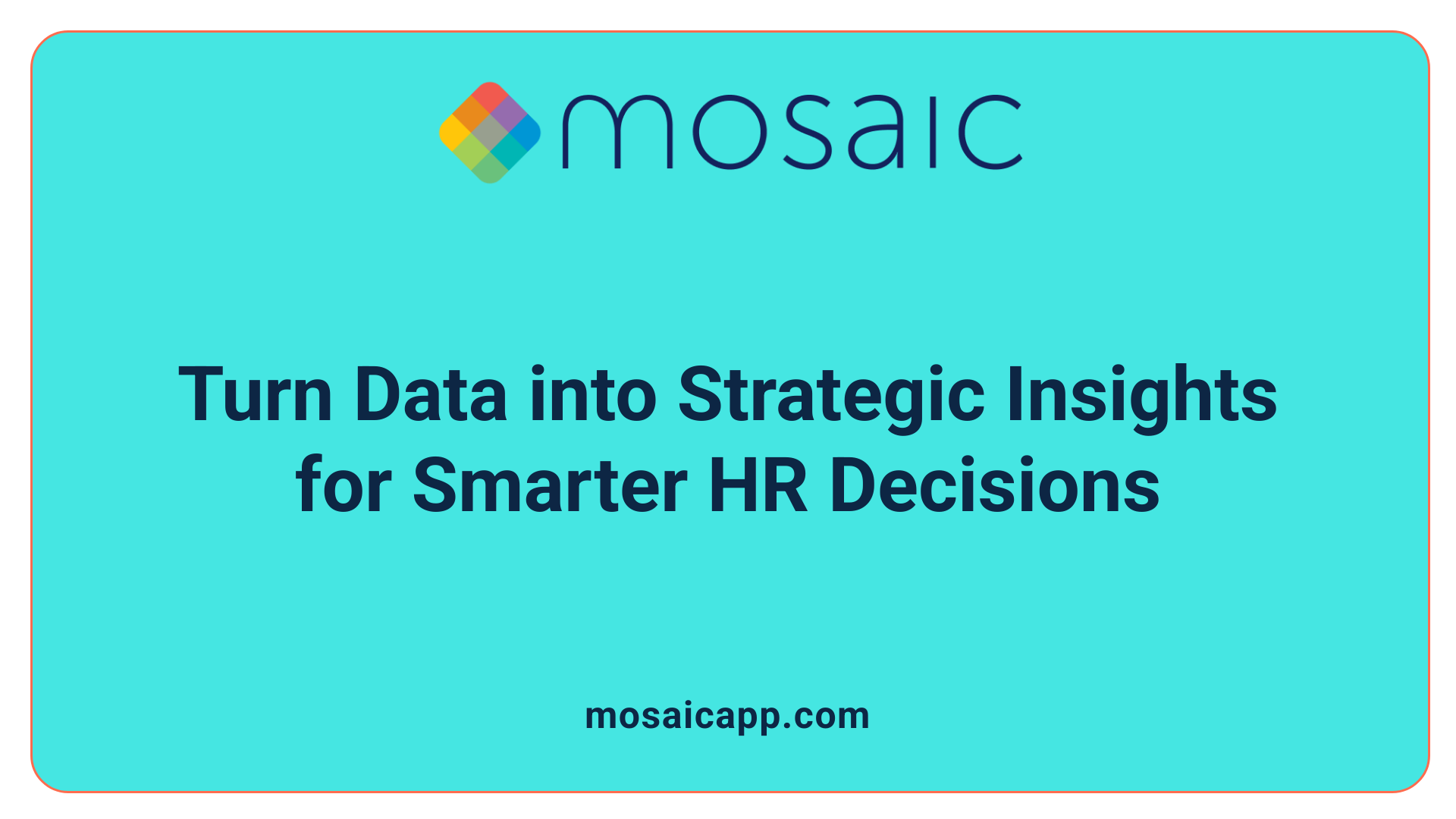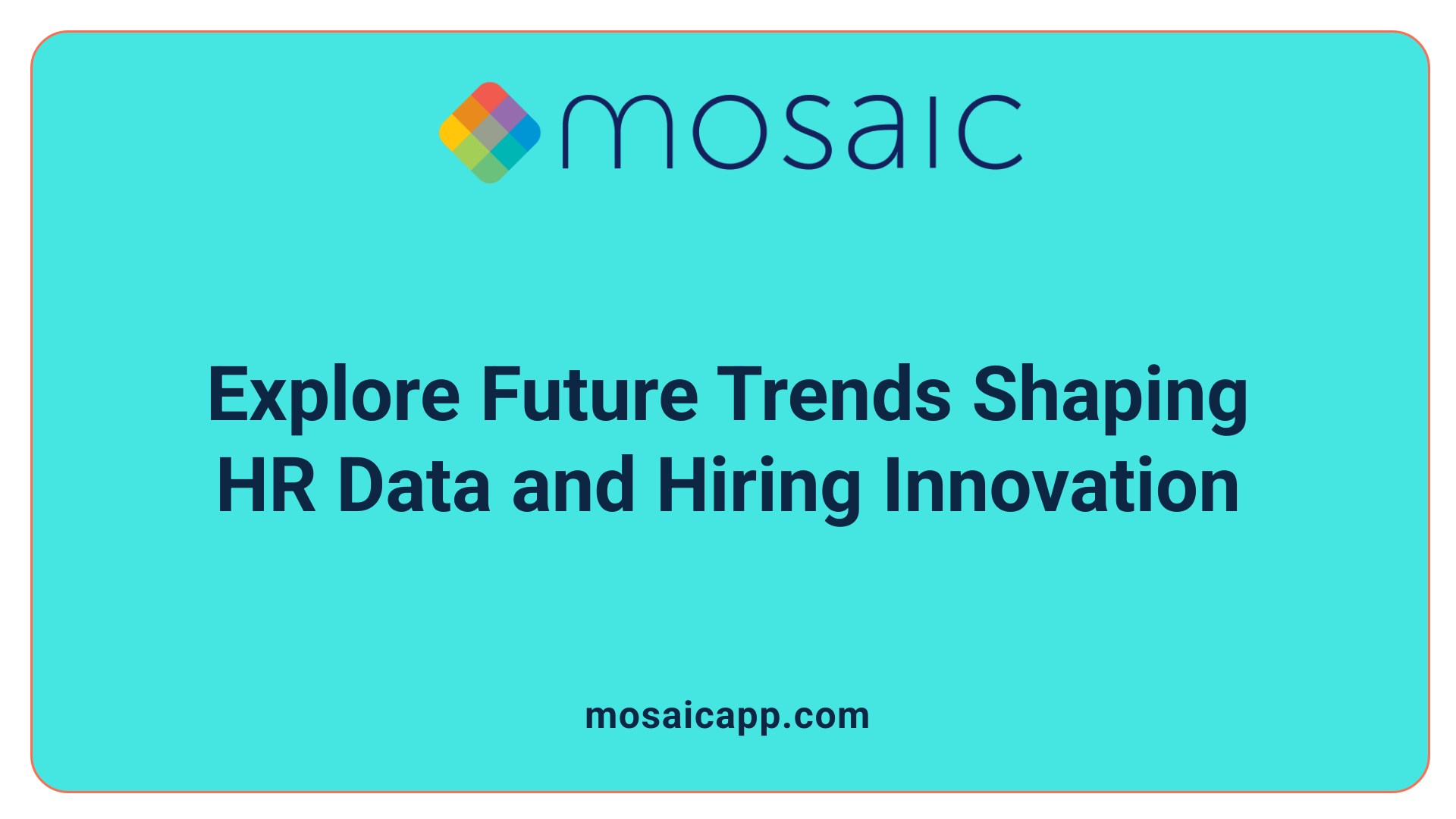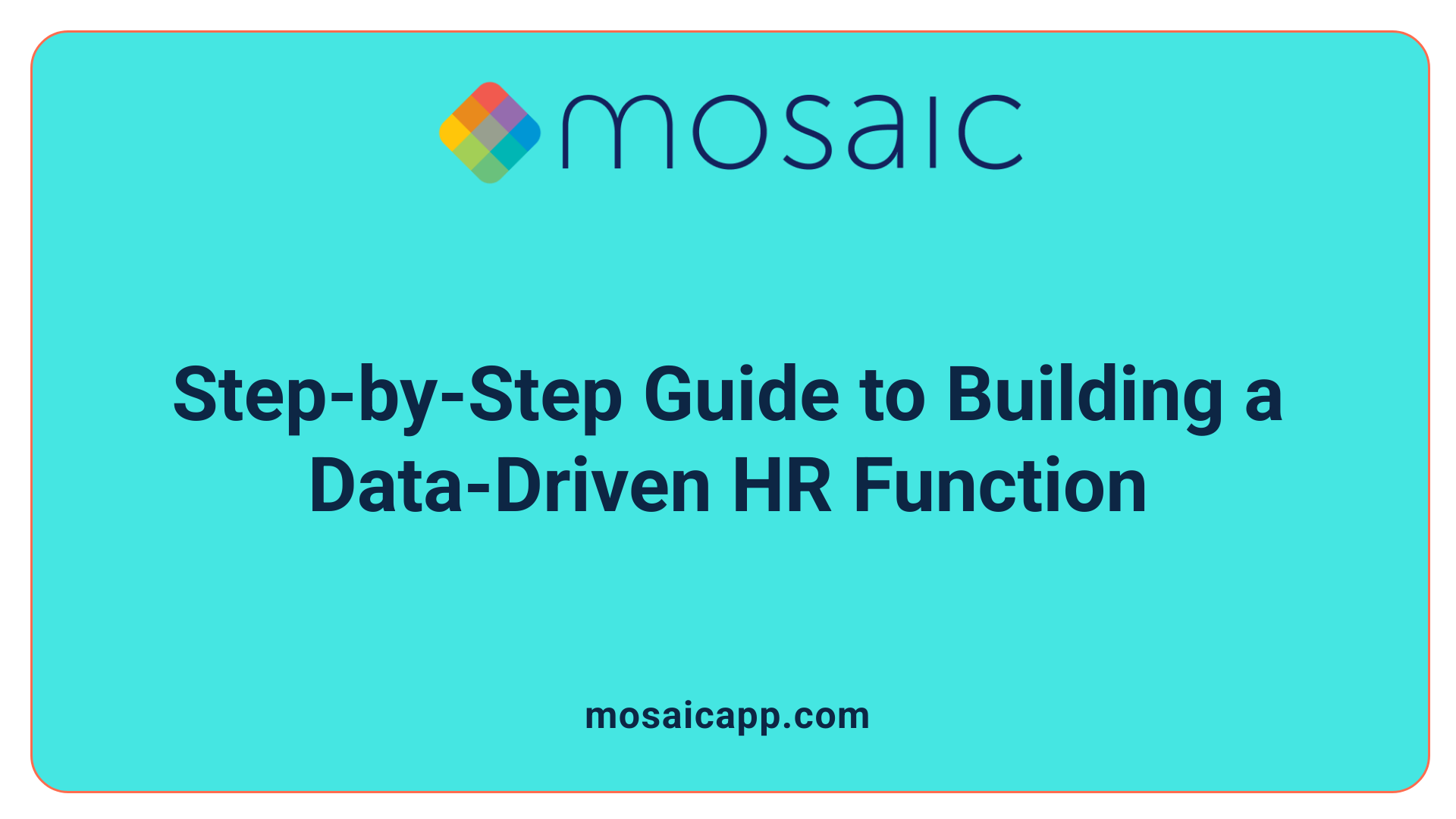Harnessing Operational Data for Smarter Hiring
In today’s competitive labor market, HR leaders are increasingly relying on operational data to enhance recruitment practices, improve workforce planning, and make informed hiring decisions. Building an effective data-driven approach involves integrating diverse data sources, leveraging advanced analytics tools, and fostering a culture of continuous improvement. This article explores the key strategies, frameworks, and future trends shaping the way HR professionals utilize operational data to lead smarter, fairer, and more efficient hiring processes.
The Foundations of a Robust HR Data Strategy

What components are involved in an HR data strategy?
A comprehensive HR data strategy is built on several fundamental components. It begins with aligning the strategy with the organization’s overall goals, ensuring that data initiatives support business outcomes such as talent acquisition, retention, and workforce planning. Key elements include establishing effective data collection methods—using HR Information Systems (HRIS), surveys, and analytics tools—along with robust governance and privacy frameworks to protect employee data. Data quality protocols are essential to maintain accuracy and reliability, while analytics and modeling enable organizations to derive meaningful insights.
Advancements such as AI and automation further enhance data analysis, allowing for predictive insights and efficient processing. Reporting tools, visualization dashboards, and technology infrastructure—like integrated HR platforms—support data accessibility. Building a data-literate HR team and fostering a culture of data ethics and transparency ensure responsible usage. Collaboration across departments and continuous review of strategies help adapt to changing organizational and technological landscapes.
How should organizations align their strategic objectives with their HR data strategies?
Organizations must begin by clearly defining what they aim to achieve through HR analytics—be it reducing turnover, improving diversity, or optimizing recruitment pipelines. These objectives guide data collection priorities and analysis approaches. For instance, if retention is a focus, gathering engagement and performance data alongside exit interview insights becomes crucial.
Aligning goals also involves setting measurable KPIs such as time-to-fill for recruitment or employee Net Promoter Scores (NPS). Regular stakeholder communication and reporting ensure that HR initiatives remain aligned with business needs, facilitating decision-making that supports strategic growth.
Why are data governance and privacy frameworks critical?
Effective data governance ensures the integrity, security, and appropriate usage of workforce data. It involves establishing policies on data access, usage, retention, and compliance with regulations like GDPR. Privacy frameworks protect employee information, fostering trust and enabling open data sharing within boundaries.
Maintaining high data quality is crucial to avoid misleading insights that could lead to poor decisions. Regular audits, validation checks, and adherence to ethical standards help uphold data integrity. As organizations adopt AI and advanced analytics, data governance becomes even more vital to mitigate risks and ensure responsible innovation.
| Aspect | Description | Importance |
|---|---|---|
| Components | Data collection, analytics, AI, reporting, infrastructure | Supports comprehensive insights |
| Goals Alignment | Align data efforts with organizational objectives | Ensures relevant and impactful insights |
| Data Governance & Privacy | Policies on data security, access, compliance | Builds trust and legal compliance |
| Data Quality | Validation, accuracy, consistency | Enables reliable decision-making |
| Culture & Ethics | Promoting data literacy, transparency | Fosters sustainable data-driven practices |
By integrating these elements thoughtfully, organizations can build an HR data strategy that not only provides valuable insights but also reinforces ethical standards and strategic agility.
Leveraging Tools and Metrics for Optimal Recruitment Analytics

What tools and metrics are commonly used for HR data analytics in recruitment?
Modern recruitment relies heavily on specialized tools and carefully selected metrics to improve hiring processes. Applicant Tracking Systems (ATS) like Greenhouse, Lever, and Taleo are central for managing candidate pipelines and tracking application statuses.
Alongside ATS, HR analytics platforms such as Tableau, Power BI, and Visier enable visualization and deeper analysis of recruitment data. These tools allow HR teams to create interactive dashboards, track trends, and generate insights at a glance.
AI-powered solutions like Eightfold AI and X0PA AI are increasingly popular. They enhance candidate matching, forecast hiring needs, and identify high-potential candidates through predictive analytics.
The metrics tracked in recruitment analytics are crucial for assessing performance. Common indicators include:
| Metric | Purpose | Additional Notes |
|---|---|---|
| Time-to-Hire | Measures efficiency of the hiring process | Shorter times often mean a more responsive process |
| Cost-per-Hire | Evaluates financial investment per new hire | Includes advertising, agency fees, and onboarding costs |
| Quality of Hire | Assesses new hire performance and fit | Often derived from manager feedback and performance data |
| Offer Acceptance Rate | Indicates candidate engagement and process effectiveness | A higher rate suggests a positive candidate experience |
| Early Turnover | Tracks retention shortly after hiring | Helps identify onboarding or cultural issues |
| Overall Turnover | Measures workforce stability | Critical for long-term planning |
Supplemental metrics include recruiter productivity, sourcing channel efficiency, and candidate engagement levels, all visualized through dashboards to enable quick decision-making.
How do these tools and metrics support data-driven recruitment?
By integrating these analytics tools with key metrics, HR teams can identify bottlenecks, evaluate sourcing methods, and make informed choices. Visual dashboards provide real-time insights, allowing recruiters to adjust strategies promptly.
Using predictive analytics, organizations can forecast future hiring needs based on workforce trends and external labor data, leading to smarter workforce planning.
In summary, combining advanced HR analytics tools with relevant recruitment metrics transforms traditional hiring into a strategic, data-informed process that enhances quality, efficiency, and diversity in talent acquisition.
Creating Actionable Insights through Data Analysis

How can analysis of HR operational data inform hiring decisions?
Analyzing HR operational data provides organizations with a detailed view of workforce dynamics, operational efficiency, and employee behaviors. Using various forms of analytics—descriptive, diagnostic, predictive, and prescriptive—HR teams can transform raw data into strategic insights.
Descriptive analytics helps identify what has happened in areas like turnover, absenteeism, and recruitment cycle times. For example, HR can detect patterns such as high turnover in specific departments or longer-than-average hiring processes. Diagnostic analytics then investigates why these patterns occur, revealing root causes like ineffective onboarding or competitive salary structures.
Predictive analytics uses historical data to forecast future staffing needs, employee success, and risks like potential attrition. This proactive approach allows HR to prepare targeted retention strategies and plan for upcoming recruitment demands.
Prescriptive analytics goes a step further by recommending specific actions. It might suggest optimizing recruitment channels, targeting skill gaps with training, or adjusting hiring practices to attract better candidates.
By combining these analytical methods, organizations make more informed hiring decisions. They can align their recruitment efforts with forecasted needs, improve candidate quality, and ensure that hiring strategies support broader business objectives. Ultimately, this data-driven approach enhances workforce effectiveness and boosts organizational performance.
Integration of External Data Sources for Better Workforce Planning
What external data sources can enhance HR workforce planning?
To build a robust and forward-looking workforce plan, HR professionals should incorporate various external data sources. External labor market data, such as information from the U.S. Department of Labor’s Bureau of Labor Statistics, provides insights into overall employment trends, wage levels, and regional job market dynamics.
Industry trend reports are valuable for understanding shifts in demand for specific skills, emerging job roles, and technological advancements that could impact talent needs. Regional employment insights, including economic indicators and local job market statistics, help organizations gauge talent availability and competitiveness in specific areas.
By analyzing these external sources, HR can better anticipate future talent shortages and surpluses. This proactive approach allows for strategic adjustments in recruitment strategies, skills development programs, and retention initiatives.
Incorporating external data into workforce planning enables organizations to align their growth objectives with market realities. It helps in defining realistic hiring targets, setting competitive compensation packages, and fostering agility in talent management.
Ultimately, using external insights supports long-term organizational resilience by ensuring talent supply aligns with business expansion and industry evolution.
| Data Source | Type of Data | Use in Workforce Planning |
|---|---|---|
| U.S. Department of Labor’s BLS | Employment statistics, wage data, regional labor market data | Understanding supply and demand, wage benchmarks |
| Industry reports | Market trends, skill demand, emerging roles | Identifying future skill needs and talent gaps |
| Regional economic indicators | Local employment rates, economic growth data | Planning recruitment efforts regionally and predicting talent availability |
Effective integration of these external inputs enhances HR’s ability to make strategic, data-informed decisions, ensuring that the workforce is prepared for future challenges and opportunities.
Fostering a Data-Driven Culture in HR Leadership
Building understanding and skills in data literacy
A strong data-driven culture begins with enhancing the data literacy of HR teams. HR decision-makers should be trained to interpret and utilize workforce analytics effectively. This involves understanding key metrics, such as offer acceptance rates, candidate pipelines, turnover rates, and engagement scores. Equipping HR staff with analytics skills enables them to draw meaningful insights from data and apply these insights to strategic decisions.
Organizations can implement training programs, workshops, and certifications focused on data analysis, visualization tools, and data governance principles. Such initiatives foster confidence in working with complex datasets and reduce reliance on intuition alone, leading to more objective and reliable HR practices.
Engaging stakeholders across departments
Building a data culture also requires active involvement of stakeholders from various functions—including talent acquisition, performance management, and leadership. By demonstrating the value of workforce analytics through regular reporting and success stories, HR leaders can encourage broad adoption.
Cross-department collaboration ensures diverse perspectives in interpreting data. It also promotes shared responsibility for data quality and governance, which are critical for accurate insights. When HR professionals and other department heads work together, they can develop integrated strategies for workforce planning, diversity, and development.
Promoting transparency and open communication
Transparent communication about how HR data is collected, analyzed, and used fosters trust among employees and leadership. Clearly articulating data privacy practices, ethical considerations, and the purpose behind analytics initiatives reassures stakeholders that data is handled responsibly.
Regular updates on analytics insights and their impact on HR decisions reinforce the value of a data-driven approach. Open dialogue about successes and challenges helps refine data strategies over time, aligning them more closely with organizational goals.
How can HR decision-makers use operational data and workforce analytics to guide hiring?
HR decision-makers can leverage operational data and workforce analytics to identify talent gaps, forecast future skills needs, and optimize recruitment strategies. By analyzing metrics such as time-to-fill, candidate sourcing sources, and quality of hire, they can refine sourcing channels and selection processes.
Predictive analytics play a growing role by providing proactive insights—such as identifying employees at risk of turnover or forecasting future hiring demands based on business growth and industry trends. This enables HR to plan recruiting efforts more strategically, allocate resources efficiently, and improve candidate experience.
High-quality data and strong governance are essential to ensuring insights are accurate and actionable. When coupled with a culture that appreciates evidence-based decisions, HR teams can develop targeted talent acquisition and retention initiatives. Behavioral data, employee feedback, and engagement metrics further inform tailored strategies that foster inclusivity, motivation, and overall organizational health.
By embedding workforce analytics into everyday HR operations, organizations create a responsive and strategic talent management system. This approach not only enhances hiring quality but also strengthens competitive advantage and supports long-term growth.
Emerging Trends and the Future of HR Data in Hiring

What are the current trends and future insights in HR data utilization for hiring?
The landscape of HR data usage is rapidly evolving, with organizations increasingly embracing innovative technologies to enhance their hiring processes. Presently, the adoption of artificial intelligence (AI) and predictive analytics is at the forefront. These tools allow HR teams to analyze vast amounts of data—from applicant tracking systems (ATS) to social media—to identify top talent more efficiently and personalize candidate experiences.
Real-time dashboards and analytics platforms enable HR professionals to make quick, data-driven decisions, replacing intuition with empirical evidence. This shift supports strategic workforce planning, where companies can forecast future skill requirements based on industry trends, current workforce data, and regional labor market information.
Organizations are moving beyond traditional operational metrics, focusing instead on long-term talent development. Predictive models now help anticipate employee turnover, identify high-potential candidates, and tailor recruitment strategies accordingly.
Regarding AI and automation, these technologies streamline sourcing and screening processes. AI-powered chatbots answer candidate inquiries, schedule interviews, and even assess candidate fit through behavioral analysis—all while reducing biases associated with manual screening.
The emphasis on responsible AI use is growing. HR departments oversee AI deployment to ensure fairness, transparency, and compliance with privacy standards. This involves implementing governance frameworks and ethics guidelines to avoid bias and discrimination.
Looking to the future, HR’s role will expand into skills-based workforce planning. As organizations recognize the importance of agility, they'll focus on developing human skills such as empathy, ethical judgment, and emotional intelligence, which remain irreplaceable by machines.
In conclusion, the integration of predictive analytics, AI, and a skills-focused approach will define the next generation of HR practices—making hiring more precise, inclusive, and aligned with strategic business objectives.
Practical Steps for Building & Sustaining a Data-Driven HR Department

Step-by-step implementation
Building a data-driven HR department begins with understanding your organization’s strategic objectives. HR leaders should start by defining clear, measurable goals for using data, such as improving recruitment efficiency, reducing turnover, or enhancing employee engagement.
Next, assess your current data collection capabilities. Identify what data points are available—such as employee demographics, performance metrics, and engagement scores—and what additional data might be needed. Ensuring data quality and establishing governance protocols is crucial to maintain accurate, reliable information.
Integrating diverse data sources like HR Information Systems (HRIS), applicant tracking systems, surveys, and learning platforms creates a comprehensive data framework. This step enables holistic insights and avoids siloed information.
Investing in analytics tools and upskilling HR staff through targeted training empowers your team to analyze data effectively. User-friendly dashboards and AI-powered insights support ongoing decision-making.
Cross-department collaboration
Successful data-driven HR strategies rely heavily on collaboration across various departments. HR must work closely with IT, finance, and operations to align data collection and analysis practices.
Regular communication fosters shared understanding, helping each department see how their data impacts broader workforce planning and business outcomes. Involving leaders from different functions also increases buy-in and facilitates implementation of insights.
Creating multidisciplinary teams that include data analysts, HR practitioners, and IT specialists ensures that analytical models are relevant and actionable. This collective effort helps translate complex data into practical strategies.
Continuous review and optimization
A data-driven HR department is not static. Regularly reviewing HR metrics, analytical methods, and business outcomes ensures relevance and accuracy.
Implement a process for continuous improvement—assess what works, experiment with new approaches, and adapt to changing market conditions. Sharing success stories and value additions reinforces a data-centric culture.
Stakeholder feedback, ongoing training, and updates to data infrastructure support sustained progress. The goal is to foster a learning environment where insights lead to proactive, strategic HR actions.
| Step | Action | Outcome | Additional Notes |
|---|---|---|---|
| 1 | Define organizational HR goals | Clear focus for data use | Align with overall business strategy |
| 2 | Audit existing data & capabilities | Identify gaps and strengths | Ensure data quality and compliance |
| 3 | Integrate data sources | Holistic data view | Use HRIS, ATS, surveys, LMS |
| 4 | Invest in analytics tools | Enhanced insight generation | Use user-friendly, scalable solutions |
| 5 | Build cross-department teams | Better insights, higher buy-in | Include HR, IT, finance |
| 6 | Establish review processes | Ongoing improvement | Regular performance metrics review |
| 7 | Foster a data-driven culture | Sustainable HR transformation | Continuous training and communication |
Following these steps enables HR leaders to leverage operational data effectively, support strategic initiatives, and foster a culture of continuous improvement in workforce management.
Conclusion: The Strategic Advantage of Data-Driven HR
How can HR decision-makers use operational data and workforce analytics to guide hiring?
HR decision-makers can harness operational data and workforce analytics to make more informed hiring choices. By analyzing metrics such as offer acceptance rates, time to fill positions, candidate sourcing channels, and reasons for non-selection, HR can identify trends and gaps within the talent pipeline.
Advanced analytics, including predictive models, help forecast future skills needs by examining current workforce performance, turnover rates, and industry trends. External data sources like regional labor market statistics further inform hiring strategies, ensuring talent acquisition aligns with organizational growth plans.
Utilizing behavioral patterns and candidate feedback gathered from social media, ATS, and other systems allows for refining candidate engagement processes. This comprehensive data approach enables HR to proactively address talent shortages, improve candidate experience, and promote diversity and inclusion.
Moreover, a focus on data quality and governance guarantees reliable insights, fostering stakeholder trust. By embedding workforce analytics into strategic decision-making, organizations can optimize recruitment efforts, reduce costs, and secure a competitive edge.
In the long run, integrating operational data into hiring practices promotes agility, enhances talent management, and builds a resilient workforce prepared for future challenges.
Long-term benefits
Implementing a structured HR data strategy results in sustained improvements across workforce planning, employee engagement, and organizational performance. Organizations that utilize analytics for strategic talent management can better anticipate market shifts, adapt quickly, and continuously refine their HR practices.
Organizational agility
Data-driven HR practices enable organizations to respond rapidly to changes in labor markets and internal dynamics. With real-time insights, HR can adjust recruitment priorities, modify training programs, and improve retention strategies promptly.
Continuous learning
Building a culture of analytics fosters ongoing learning within HR teams and across the organization. Regular review of data-driven outcomes encourages experimentation, innovation, and the development of best practices in talent management.
| Aspect | Description | Impact |
|---|---|---|
| Long-term benefits | Sustained improvements in HR functions | Enhanced competitiveness |
| Organizational agility | Rapid response to market and internal changes | Improved adaptability |
| Continuous learning | Ongoing development and optimization | Innovation and growth |
By continuously evolving their data strategies and cultivating a data-informed culture, HR leaders can unlock the full potential of workforce analytics. This approach not only aids in immediate decision-making but also secures a future-ready, resilient organization.
Embracing the Future of HR with Data-Driven Practices
Incorporating operational data into HR strategies is no longer optional but essential for organizations aiming for agility, fairness, and excellence in talent acquisition. By systematically developing robust data frameworks, leveraging innovative tools, and fostering a culture of continuous learning, HR leaders can transform their hiring processes into strategic advantage. The future belongs to those who harness the power of data to make informed, ethical, and proactive decisions that drive organizational success and workforce excellence.
References
- 12 Steps To Build an HR Data Strategy [+ Examples]
- How to harness the value of people data and operational ...
- Leveraging Data-Driven Decision Making in HR
- Leveraging Data Analytics to Improve Recruitment Outcomes
- Data-Driven HR: Navigating the Future of HR Analytics
- Data-Driven Recruitment: A Guide to Modern Hiring
- How to Leverage Workforce Analytics & HR Data


